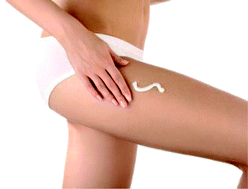Measurement of iodide and caffeine content in cellulite reductioncosmetic products sold in the European market†
Abstract
Two simple

- This article is part of the themed collection: Cosmetic Ingredients
* Corresponding authors
a
Department of Therapeutic Research and Medicines Evaluation, Istituto Superiore di Sanitá, V.le Regina Elena 299, 00161 Rome, Italy
E-mail:
simona.pichini@iss.it
Fax: +39 06 49902016
Tel: +39 06 49903682
b Centro Nazionale Organismo Notificato Dispositivi e Cosmetici (ONDICO), Istituto Superiore di Sanitá, V.le Regina Elena 299, 00161 Rome, Italy
c Faculty of Medicine and Surgery, Catholic University of Sacred Heart, L.go F. Vito 1, Rome, Italy
Two simple

 Please wait while we load your content...
Something went wrong. Try again?
Please wait while we load your content...
Something went wrong. Try again?
E. Marchei, D. De Orsi, C. Guarino, S. Dorato, R. Pacifici and S. Pichini, Anal. Methods, 2013, 5, 376 DOI: 10.1039/C2AY25761K
To request permission to reproduce material from this article, please go to the Copyright Clearance Center request page.
If you are an author contributing to an RSC publication, you do not need to request permission provided correct acknowledgement is given.
If you are the author of this article, you do not need to request permission to reproduce figures and diagrams provided correct acknowledgement is given. If you want to reproduce the whole article in a third-party publication (excluding your thesis/dissertation for which permission is not required) please go to the Copyright Clearance Center request page.
Read more about how to correctly acknowledge RSC content.
 Fetching data from CrossRef.
Fetching data from CrossRef.
This may take some time to load.
Loading related content
